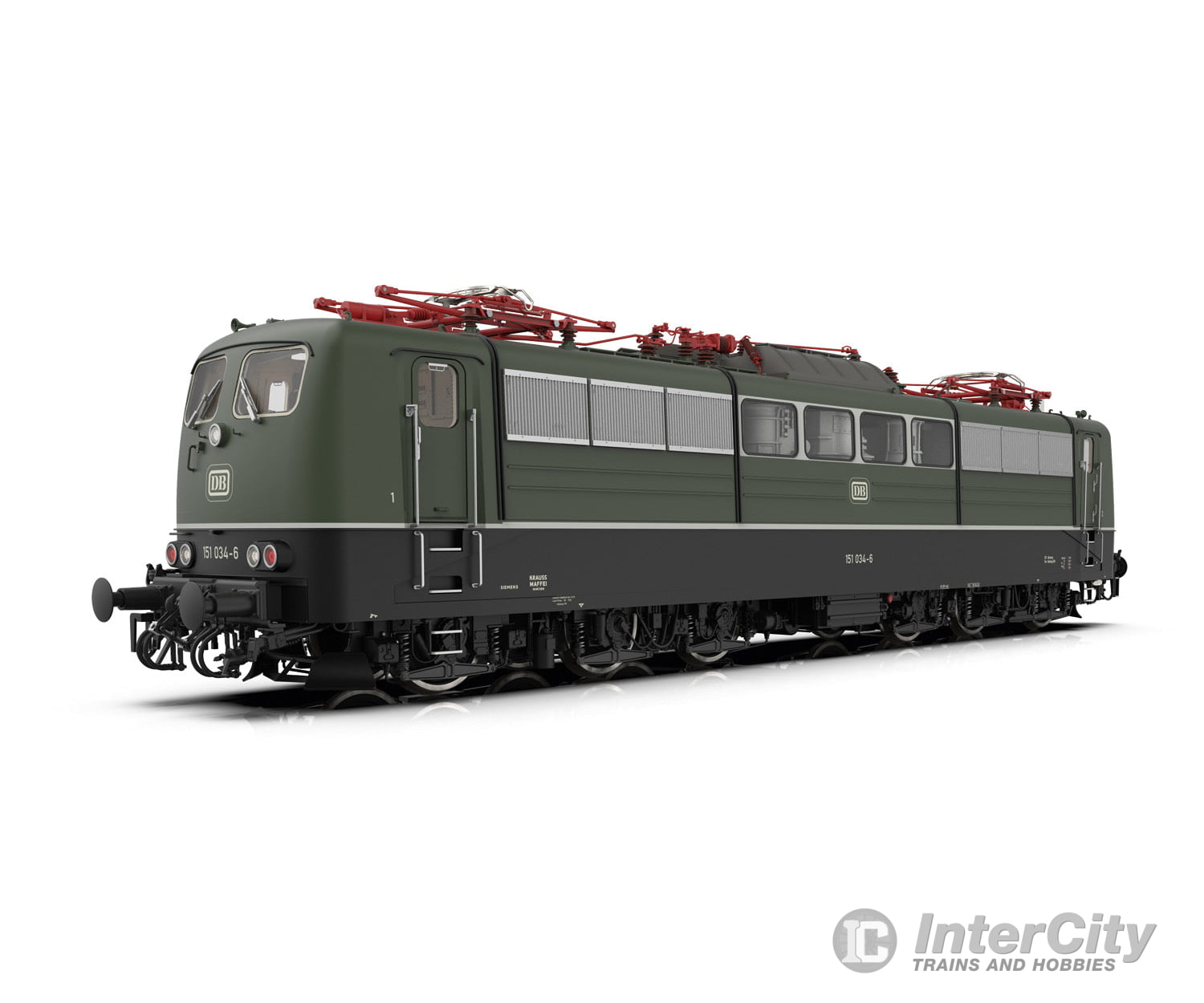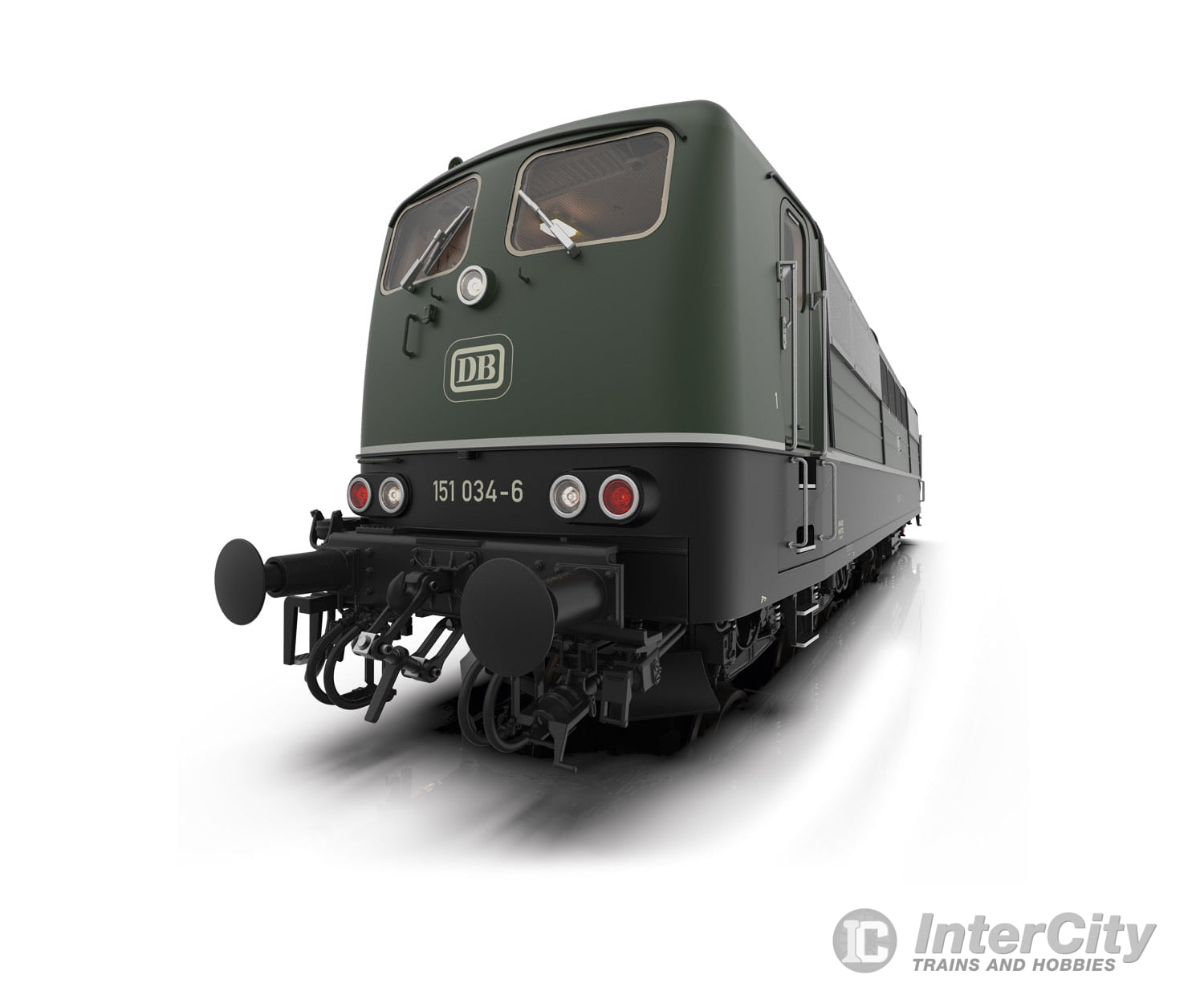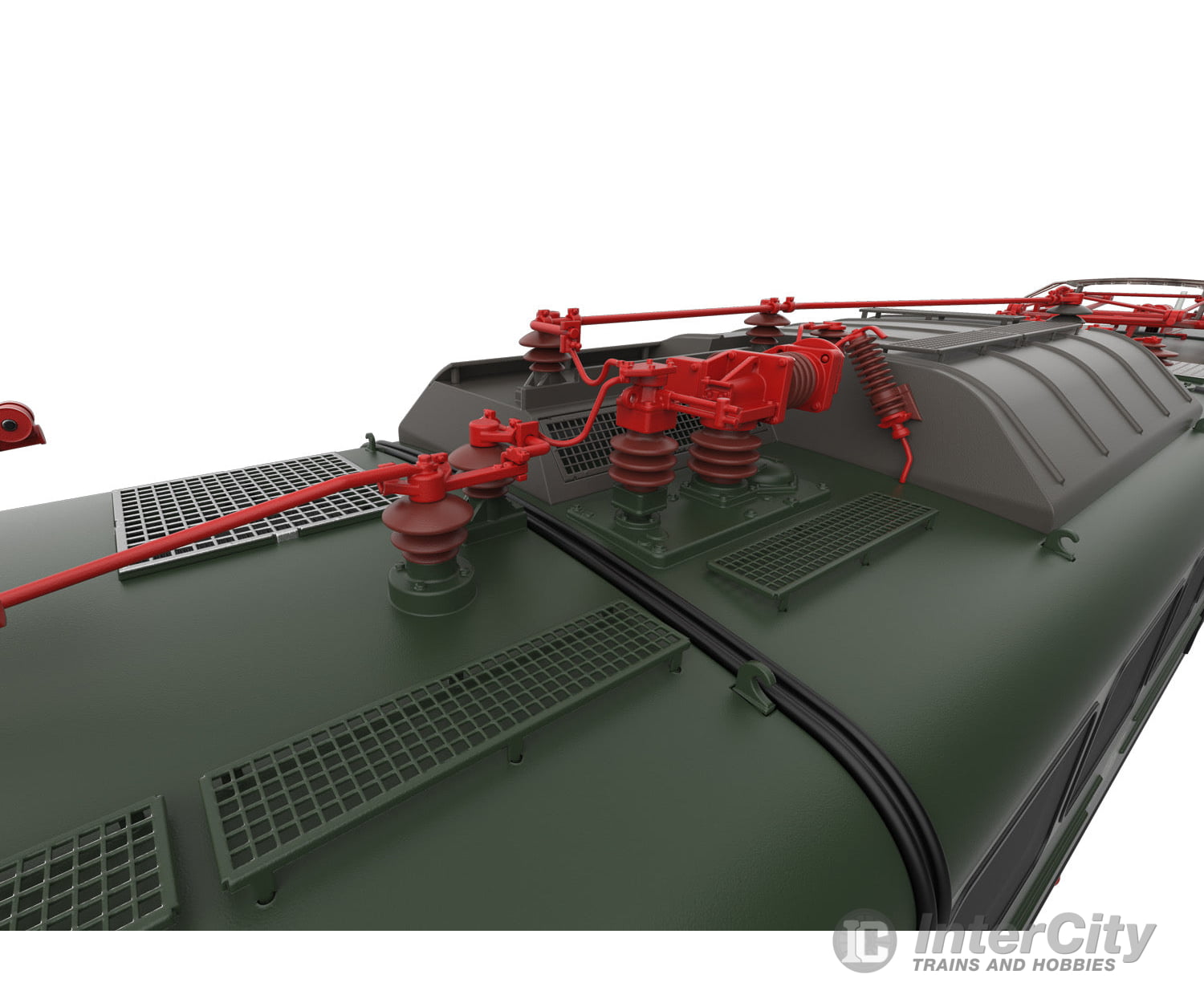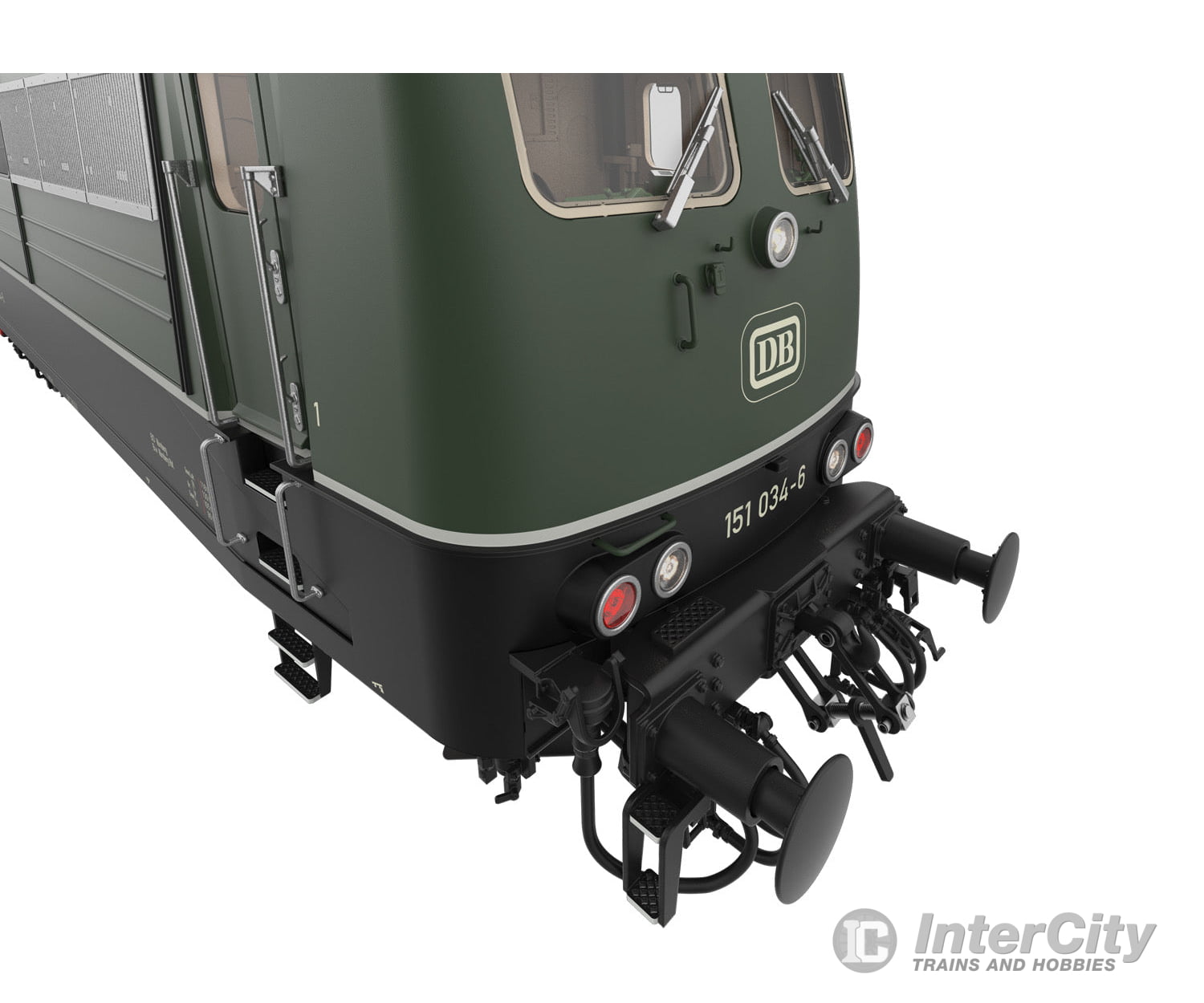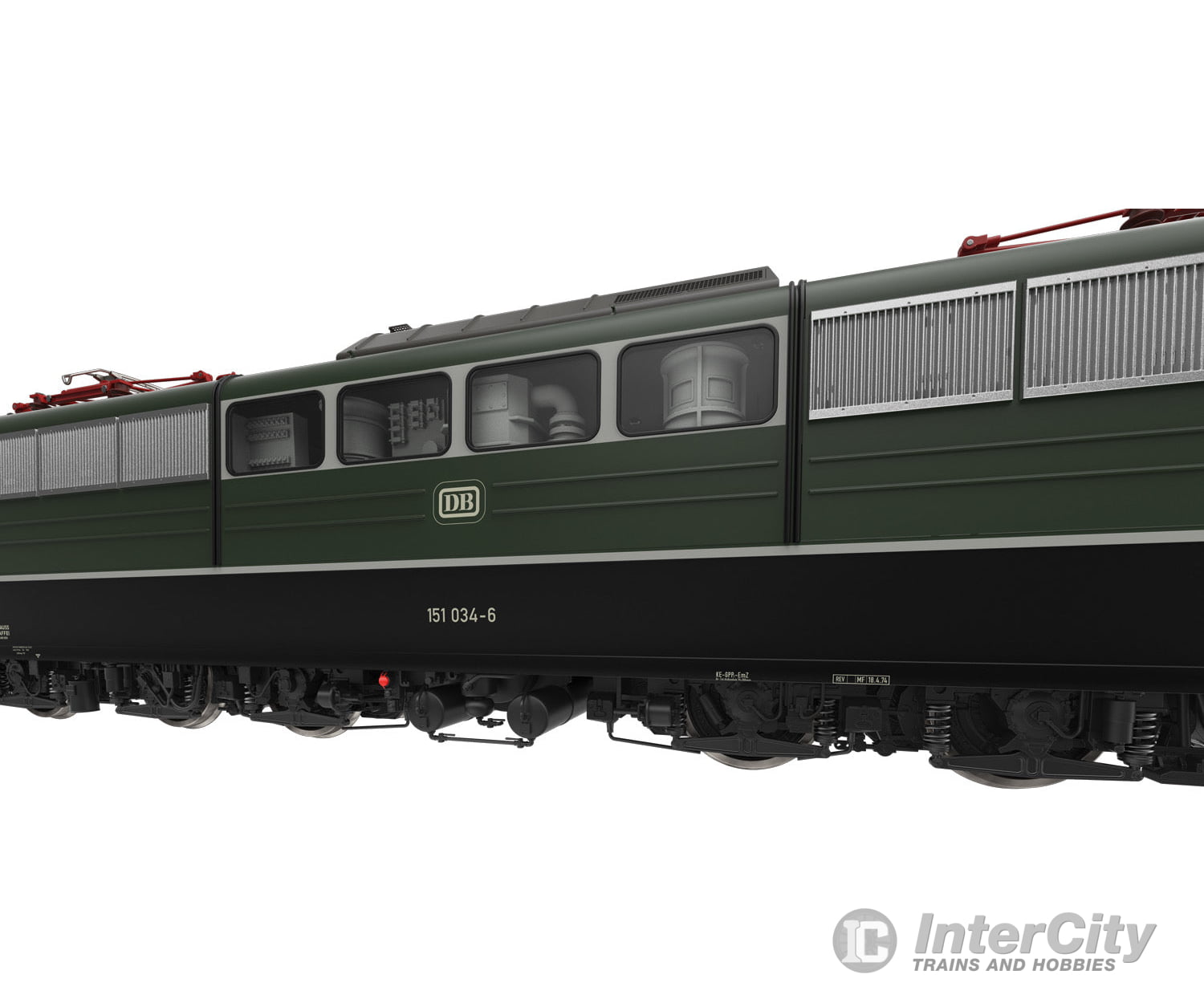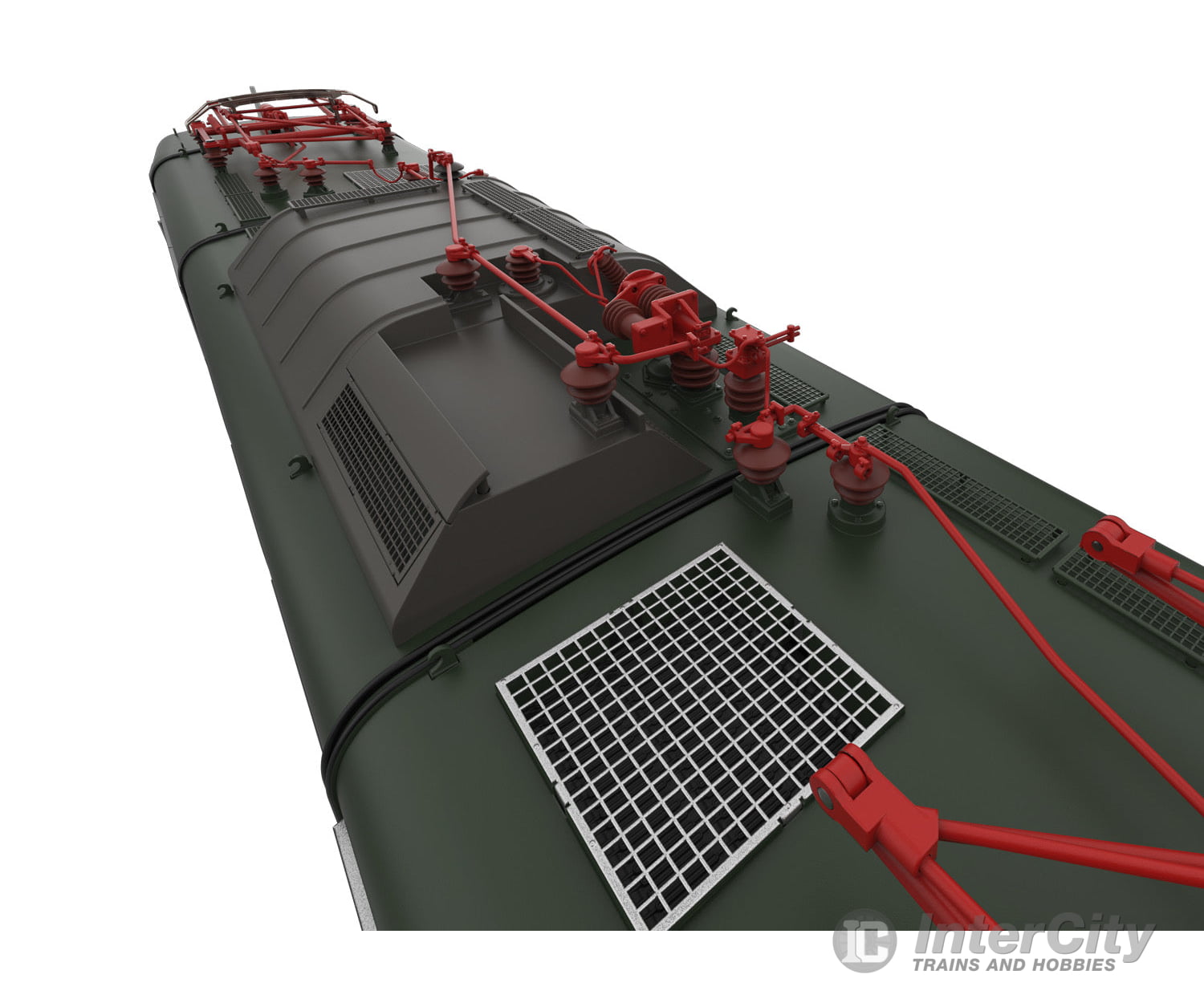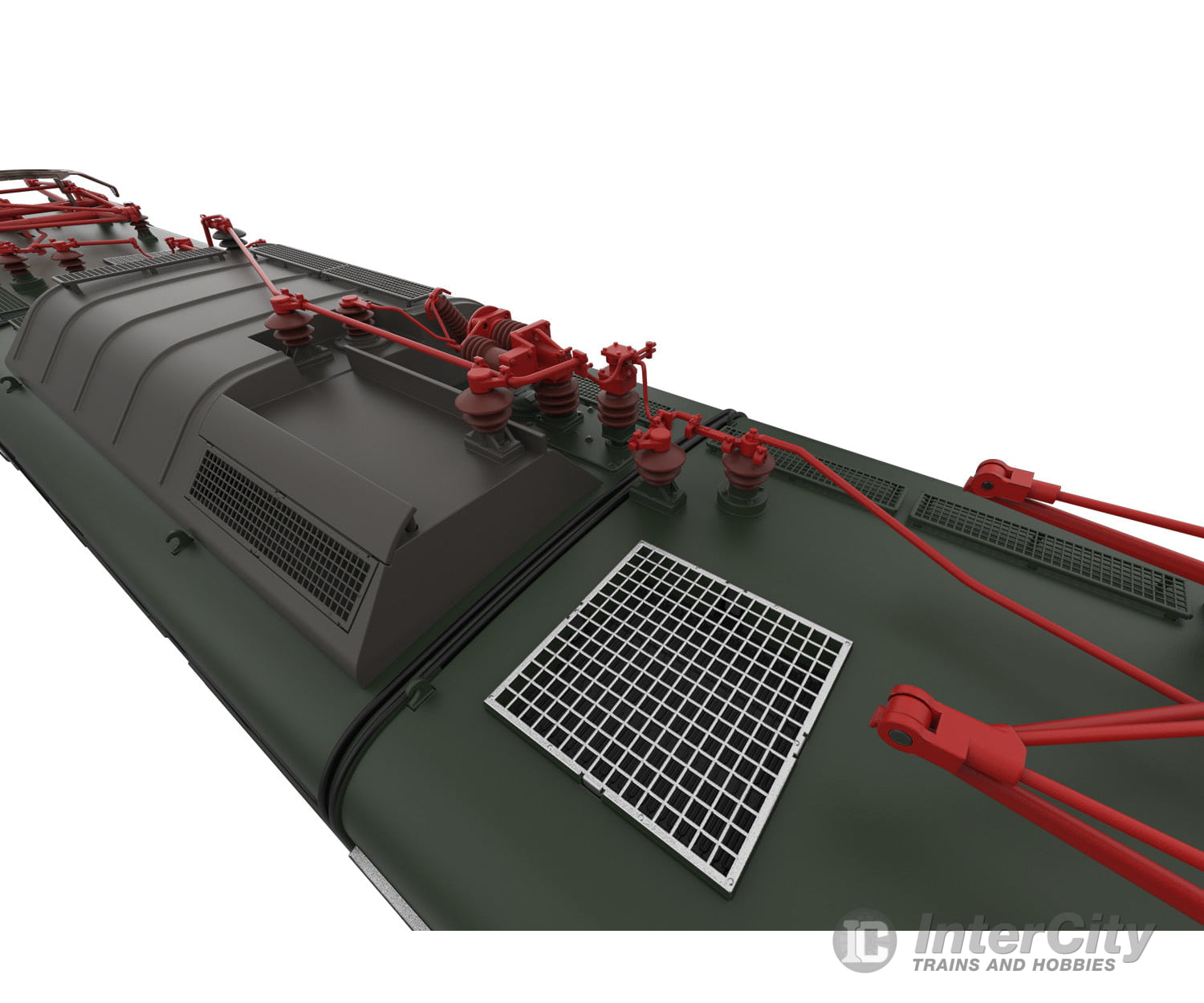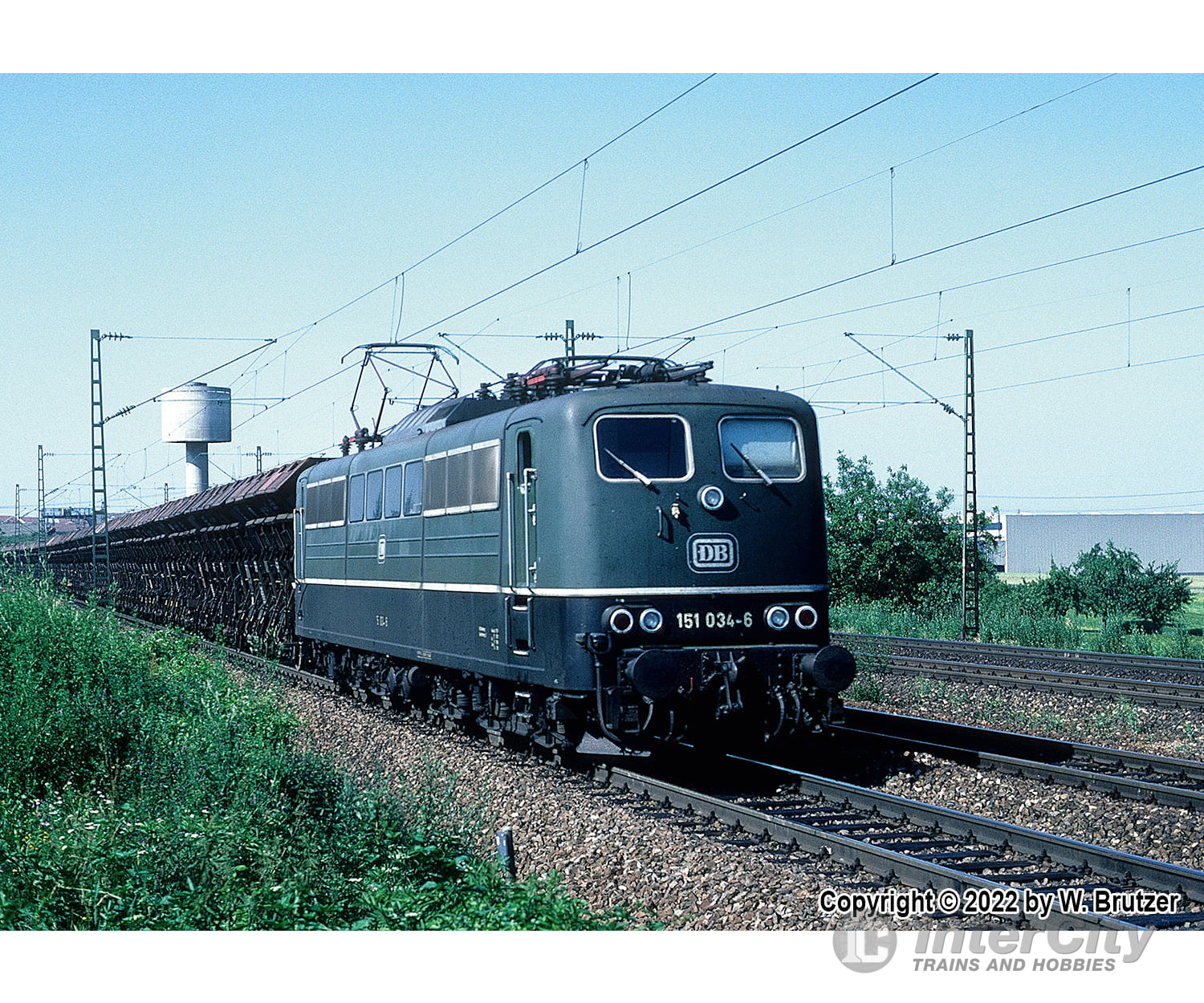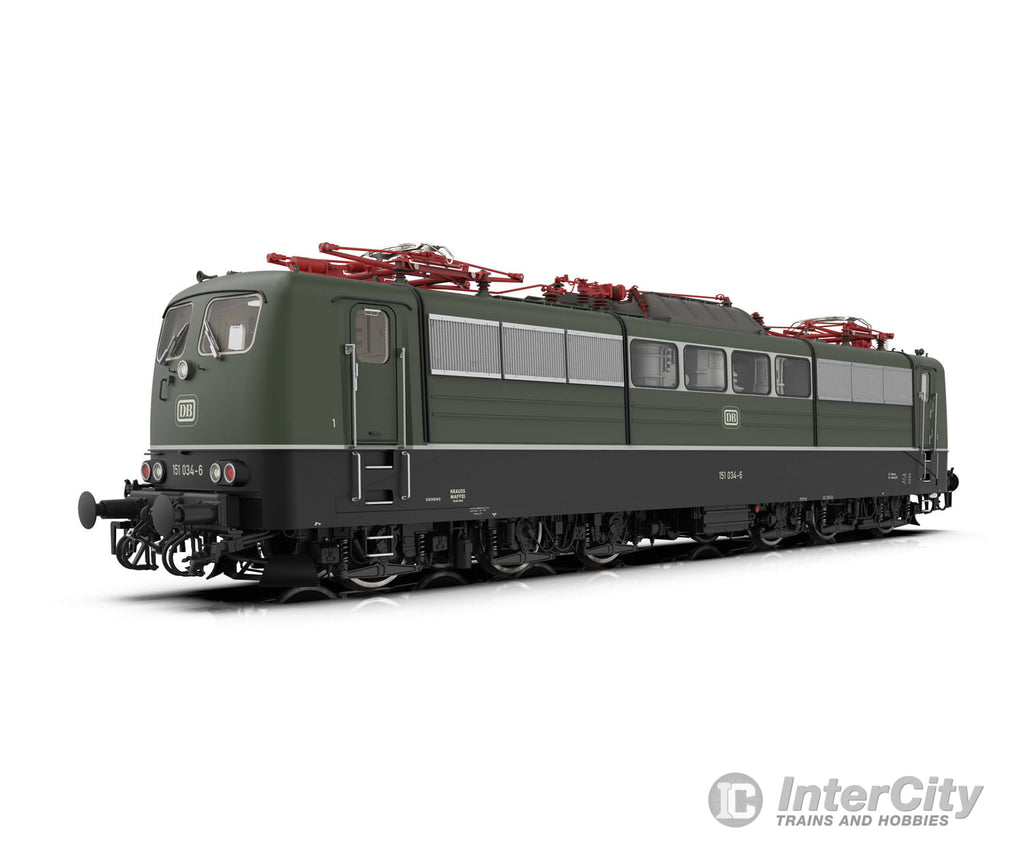Description
The class 151 appeared in 1972 as a further development of the class 150 due to increased performance requirements in heavy and fast freight service. Its design envisaged speeds of up to 120 km/h / 75 mph and train loads of up to 2,000 metric tons for freight service, which could only be reached by a locomotive with a performance of over 5,000 kilowatts / 6,702 horsepower. Krupp and AEG were responsible for the design of the class 151. By using lightweight technology as much as possible, the required axle load was maintained despite a more powerful main transformer and reinforced electrical resistance brakes. Road number 151 001 was delivered as the first unit on November 21, 1972 in a chrome oxide green paint scheme, which was kept until the delivery of road number 151 075 (except for road number 151 073).
Prototype: German Federal Railroad (DB) class 151 heavy freight locomotive. Chrome oxide green paint scheme.Road number 151 034-6. The locomotive looks as it did in Era IV around 1975/1976.
Highlights
- Complete highly detailed new tooling constructed of die-cast zinc and including separately applied parts of centrifugally cast brass.
- Highly detailed advanced model.
- Pantographs that can be raised and lowered with servomotors in digital operation.
- Digital remote controlled Telex coupler front and rear included.
- Extremely extensive sound features.
- Engineer control desk lighting.
- Current buffer.
- Prototype couplers for front and rear included.
Model: The locomotive is completely new tooling. The running gear with the main frame and locomotive body are constructed of die-cast zinc. The locomotive has many separately applied parts of centrifugally cast brass. It also has an mfx digital decoder with up to 32 functions, a built-in buffer capacitor with adjustable parameters, controlled high efficiency propulsion, and extensive sound functions such as running sounds, vent blowers, locomotive whistle, other announcements, and warnings. The locomotive can be operated with AC, DC, Märklin Digital, and DCC. It has powerful motors with propulsion to all axles. The current buffers have adjustable parameters. There are pantographs that can be raised and lowered with servomotors in digital operation. The white and red LED headlights / marker lights change over with the direction of travel, will work in conventional operation, and can be controlled digitally. The engine room lighting can be controlled. There is white LED lighting in the cabs that changes over with the direction of travel as well as approaching train lamps, which change over with the direction of travel.
The cab doors can be opened, there are interior details, and one cab has a figure of a locomotive engineer. There is also engineer control desk lighting. The locomotive has metal grab irons and many other separately applied parts such as signs, windshield wipers, whistle, and much more. The buffer beams have sprung buffers and separately applied brake lines. The locomotive has a factory-installed, remote controlled Telex coupler on the rear and a prototype coupler on the front. Each of the couplers can be replaced by the other type of coupler (included with the locomotive).
Minimum radius for operation is 1,020 mm / 40-3/16".
Length over the buffers 60.9 cm / 24".
Weight approximately 6.9 kilograms / 15 pounds 3 ounces.
| ControlUnit | MobileStation | MobileStation 2 | CentralStation 1/2 | CentralStation 3/2* Mobile Station 2** | |
|---|---|---|---|---|---|
| Headlight(s) | * | * | * | * | * |
| Pantograph 1 | * | * | * | * | * |
| Electric locomotive op. sounds | * | * | * | * | * |
| Locomotive whistle | * | * | * | * | * |
| Pantograph 2 | * | * | * | * | * |
| Telex coupler on the rear | * | * | * | * | |
| Rear Headlights off | * | * | * | * | |
| Engineer's cab lighting | * | * | * | * | |
| Sound of squealing brakes off | * | * | * | * | |
| Direct control | * | * | * | ||
| Sanding | * | * | * | ||
| Switching range + switching light | * | * | * | ||
| "Switcher Double ""A"" Light" | * | * | * | ||
| Blower motors | * | * | * | ||
| Special light function | * | * | * | ||
| Headlight(s): Cab1 End | * | * | * | ||
| Letting off Air | * | ||||
| Headlight(s): Cab2 End | * | ||||
| Special sound function | * | ||||
| Windshield wiper sounds | * | ||||
| Special light function | * | ||||
| Special light function | * | ||||
| Whistle for switching maneuver | * | ||||
| Special sound function | * | ||||
| Surrounding sounds | * | ||||
| SIFA warning sound | * | ||||
| Special sound function | * | ||||
| Compressor | * | ||||
| Blower motors | * | ||||
| Telex coupler on the front | * | ||||
| Special light function | * |
